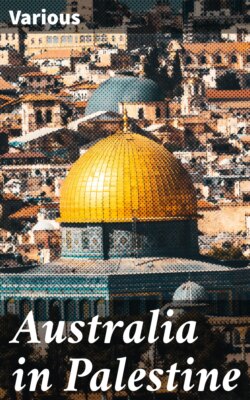Читать книгу Australia in Palestine - Various - Страница 21
На сайте Литреса книга снята с продажи.
JERUSALEM AND JERICHO
ОглавлениеTable of Contents
In the wars of the ancients, cavalry and chariots were always used down on the Philistine Plain, while the Judean Hills were regarded as practicable only for infantry. It is the same to-day. The Great Drive on the Plain finished, the British infantry, with Yeomanry dismounted, moved eastward through the narrow passes and up the harsh, rocky hillsides of Judea towards Jerusalem. The Turks stubbornly resisted our capture of the Holy City, and the fighting, at times, was bitter and bloody in the extreme. But the gallant little Londoners, to whom fell the honour of most of this significant advance, won their way steadily forward. Only one Light Horse Regiment, the Western Australians, played any immediate part in the operations which, on 9th December, culminated in the surrender of Jerusalem.
A few weeks later, the 1st Light Horse Brigade and the New Zealanders marched secretly, at night, from Bethlehem by steep mountain tracks, and, co-operating with the 60th (London) Infantry Division, after a sharp fight at Nebi Musa captured Jericho. This exploit was distinguished, as the Anzacs’ work in the campaign has always been, by the remarkable work of our guides. A squadron of the 1st Brigade had the honour of being the first to enter the village; but the winning of the Jordan Valley, like the capture of Jerusalem, was, in the main, due to the solid fighting qualities of the men of London. To-day, all through the Judean Hills, you come upon little wooden crosses which tell of the spirit and self-sacrifice of our good ally, the fighting Cockney.
